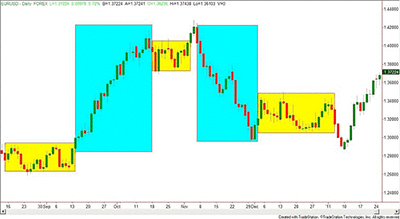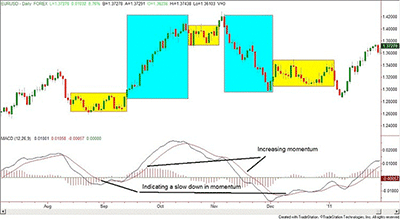Promote greater consistency by identifying changes—psychological or market-related—and responding more effectively.
Is your trading profit and loss statement kind of like the winter weather in Texas—hot one week, cold the next? There are a couple of things that could contribute to these swings in your P&L.
Trading for a living is a strange “job”and is certainly not like most careers. In every class I teach, I ask this question: "Who has had a job working for someone else where you get the same paycheck every two weeks?” Most hands go up. People with “normal” jobs get paid once or twice a month, so on the first and fifteenth, they get the same amount in their checks. Trading, of course, isn't like that. To me, trading is more like a high-end real estate sales job in which you may go a couple of months without a sale, and then a huge, multi-million-dollar home closes. That's when the big paycheck comes in to make up for the weeks of no sales. In my experience, trading is all about grinding out small winning trades to pay your bills until the big paydays come. So when do the big paydays come? Good luck finding that out ahead of time! (Please don't send me emails about Elliott Wave or Fib time zones, thank you very much.)
So what contributes to these streaks of profitable and not-so-profitable trading days? The first that comes to mind is the psychology of the typical trader. After a few winning trades or winning weeks of trading, very often a trader's ego starts to get in the way. After nailing several trades in a row, I know I feel a bit more confident, as do many people I talk to. Once this overconfidence starts to creep in, many new traders will move their stops just a few more pips in the wrong direction (a rookie mistake) because they know they will be right, or they over-leverage their account (yet another mistake). This inevitably leads to larger losses, often negating the wins of the previous days or weeks.
This is why I believe a trading diary is a good thing for new traders to use because it is a reminder of how you were feeling after a streak of winning trades and how you felt after the losses started to come. Keeping notes in a journal, or adding notes to a chart and then saving the chart as a .jpg, will help you move along in your trading career.
The second reason that your profitability may not be consistent is the marketplace itself. The forex market is a great trending market, but it can also channel or consolidate for weeks at a time! Experienced traders will often trade these markets differently.
Here is an example with a EUR/USD chart:
Notice the distinct difference in the yellow shaded areas versus the blue shaded areas. The yellow shaded area is considered channeling or consolidating, while the blue area is considered trending. In which area is it easier to make money? Obviously, the blue! Letting your winners run in the blue shaded areas was obviously a good idea, while in the yellow shaded areas, your winners may not have even reached your second or third targets.
Now, how can we get an idea of what type of market we are in, be it trending or consolidating? Let's take a look at a common indicator, the MACD (Moving Average Convergence/Divergence).
By looking at the MACD line versus the signal line, you can see as they move closer together, the momentum of the move is weakening. As the MACD and signal line are moving apart, the momentum of the move is increasing. By studying this simple indicator, it can help you determine if this market is trending, therefore letting winners run, or if the momentum is slowing, we should be more disposed to shorter-term trades.
So, there are two reasons why your trading P & L may be hot and cold like the seasons. When that happens, think about whether your view of the market has changed in some way, or if the market dynamic has changed. Either way, you’ll need to make an adjustment.
The road to success in trading hinges on you being able to control yourself and recognize the fact that the market will change from time to time.
By Rick Wright, instructor, Online Trading Academy























